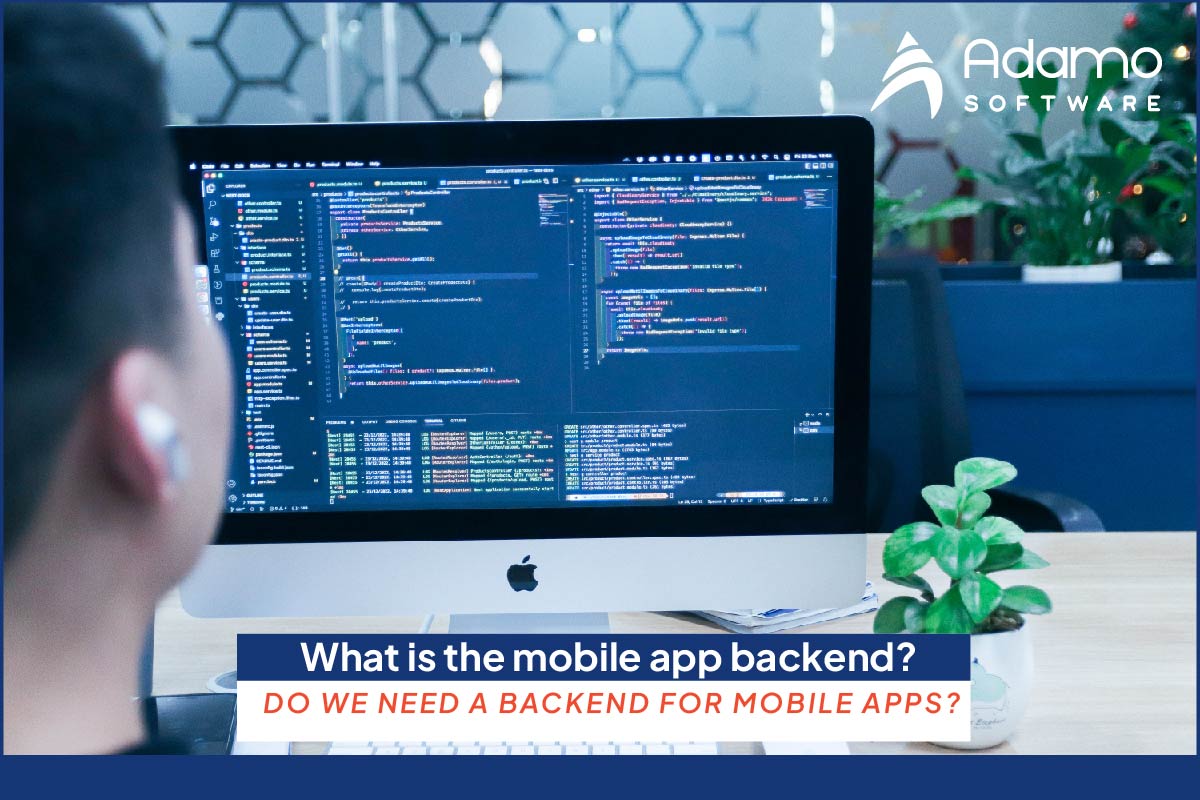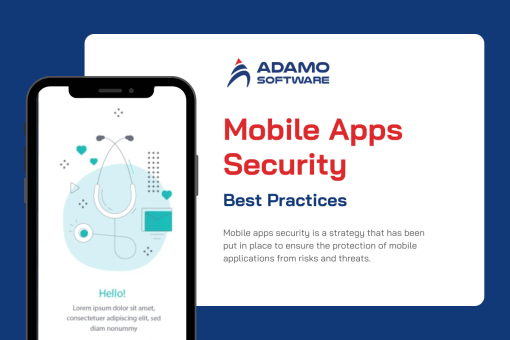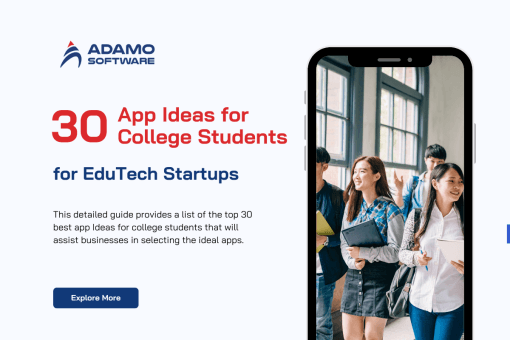What is backend for mobile apps? Do we need mobile app backend?

The backend functions identically to rocket impact motors. Here is the 2023 guide to choosing the best backend for mobile apps.
Backend services are essential for mobile apps to accomplish server-side operations correctly. The establishment of app backends is more complicated than client-side development. Therefore, it is always necessary to choose the backend for mobile apps carefully.
Let’s look at what the backend for mobile apps is, how it operates, and its advantages. We will also highlight the top mobile app backends.
I. What Is Mobile App Backend?
A backend for mobile apps is the part of the app that operates on a server rather than the device itself. The infrastructure enables the app to store and manage data, authenticate users, process and analyze data, and communicate with other systems or services.
A backend can be a server operating on a cloud service, a database, or an API, among other things. It provides the infrastructure and tools required for the app to function correctly and enables the app to deliver a rich and engaging user experience.
II. What Is Mobile App Backend Architecture?
Backend for mobile app architecture is the process of designing the app’s backend structure and business logic. A robust backend architecture enables seamless navigation and use of the app’s various features. The user need not be concerned with the complex operations occurring on the backend.
Backend development ensures that your mobile app functions as intended. The backend differs between apps and can be distinguished by servers, databases, and middleware.
III. Difference between Front end & Backend development
| Points of difference | Front end Development | Backend Development |
| Definition | The term front end refers to the user interface (UI). It is focused with the successful implementation of a mobile app’s graphical user interface and visual components. | Backend refers to the server, application, and database that deliver pertinent information to consumers in the background. |
| Skills Needed | Front end development requires a combination of technologies such as HTML, JavaScript, and CSS. | Backend for mobile app requires knowledge of programming languages such as Ruby on Rails, Python, PHP, Java, C#, and ASP.net. |
| Independence | Except for completely inert applications, front end development cannot work without the backend. | Backend for mobile app developers are autonomous from front end developers. In many instances, certain backend apps can operate without an interface. |
| Objectives | The objective of a front end developer is to create an interface that allows users to utilize a product efficiently. They ensure that the app is responsive and accessible on all target platforms. | Backend for mobile app developers are responsible for creating software solutions that support the front end. It provides numerous services and supports them with current data. It must also guarantee that the app is secure and that its data are processed correctly. |
| Development team | On the basis of user requirements, a typical front end development team would create a wireframe to determine the structure and layout of the app’s displays. They continuously interact with users to solicit their feedback, educate them, and optimize the design elements for various smartphone models. | Backend for mobile apps must implement business logic and discover solutions to complex enterprise problems. In addition, they assist the front end development team by supplying a suitable API. |
| Framework used | Vue.js, React, AngularJS, and jQuery are the most popular UI development frameworks. | The most prevalent backend development frameworks include CakePHP, Laravel, Django, Flask, Ruby on Rails, .Net, and CodeIgniter. |
IV. How Does a Mobile Backend Work?
The backend for mobile apps interacts with an app’s interface to respond to user requests. The backend and front end are the soul (backend) and body (front end) of any modern mobile app. Without the backend, the front end is inoperable, and without the front end, the end user would not be able to comprehend an app (since there is no visual layer).
However, how does communication occur? How does a machine-based infrastructure comprehend human requirements?
The solution resides in two-way API communication. The front end transmits a request to the backend whenever a user taps the display. The backend retrieves the data necessary to perform a function via an API and returns the final result to the front end.
Consider an example.
Say, you want to purchase your preferred pair of shoes on Amazon. You select a payment method on the checkout page after clicking the buy now icon.
The front end (Amazon app) transmits a request to its backend servers to establish a connection with the external payment gateway. The result is a page requesting payment credentials such as credit card information, billing address, CVV, etc.
The API links the backend and the front end to the external service (payment provider) to display the payment page and complete the transaction. The two-way communication guarantees the app’s continued functionality and provides the end-user with the desired solution to purchase a pair of shoes.
V. Types of Mobile App Backend
There are three types of backend for mobile apps:

1. Third-Party SaaS
The product you’re tasked with creating may be already on the market. That means they have developed a backend for mobile apps from the start.
Few platforms or apps allow you to connect your front end to their backend on a subscription-based, biennial, or monthly payment basis.
This technique plays a crucial role as a plug-and-play solution, where you simply connect your mobile app’s front end to its backend for a monthly fee and activate your app. These solutions are known as third-party mobile app backends or SaaS solutions.
2. MBaaS Solutions
Mobile Backend as a Service (BaaS) is a platform that handles cloud infrastructure and automates the backend of development.
Provides pre-built elements with a backend that can be utilized to implement all sophisticated features. In fact, you are permitted to acquire your own custom code features outside of the available components and libraries.
With this, backend developers can use reusable elements and pre-populated libraries instead of developing a backend from scratch. In this MBaaS solution, app owners must pay a monthly charge to access services such as push notifications and a large user base.
3. Custom Backend
If you need complete flexibility and customization in your app, you need a custom backend for mobile apps. To provide your app’s users with customized features, you will need to develop the backend from inception.
However, when it comes to backend for mobile app customization, you may be required to pay developers a hefty sum or invest in fundamental infrastructure. Nevertheless, the cost of a custom infrastructure is justified if you are developing an app that must provide high performance and security to its users.
If you are concerned about the app’s security and performance, you must construct a custom backend using an appropriate technology stack. In addition, you can opt for a hybrid strategy that combines SaaS, MBaaS, and custom infrastructure solutions.
Also read: Ionic app builder and how it works with the cross-platform mobile development
VI. Benefits Of Backend Server For Mobile Apps
1. Fast development speed.
The backend for mobile app service accelerates app development as a whole. Automating development tools can reduce backend coding time by up to 80%, thereby increasing productivity.
The following automated operations use back end services:
_ Integrate a Content Delivery Network (CDN) for files and databases.
_ Providing an API-integrated data model that is available for use.
_ Server configuration.
2. Low-cost solutions
By decreasing development time, it is possible to reduce app production costs. Thus, startups and corporations will have software engineers available for various high-value duties.
3. Focusing on your core business
Using the backend for mobile app service, businesses can concentrate on their primary operations. Companies that concentrate on their essential competencies have more time to manage crucial matters, such as customer engagement, logistics management, and employee motivation.
4. Greater productivity in less time
Because the process is handled by professionals with years of experience, the backend for mobile app services generates better results. It is recognized to eliminate repetitive codes, resulting in a better output in less time.
5. Shortened time to market
In today’s fast-paced environment, getting a product ready in a short period is critical for any entrepreneur. Startups struggle to create a market-ready app in its early phases. As a result, the sooner the product is ready, the better.
Corporations can profit from the backend for mobile app services as well because it allows them to launch products faster, run numerous tests concurrently, and establish satellite systems with fewer resources.
6. A wider range of app features.
The backend for mobile app services is created with the app’s users in mind. By coding in the backend, developers can provide users with an increased set of capabilities.
7. Cloud infrastructure outsourcing.
Outsourcing cloud infrastructure allows businesses to decrease expenses while increasing reliability, security, and overall work quality.
8. Continuous Integration and Delivery.
Continuous delivery and integration (CD/CI) are critical app development models. CI occurs while you develop the software. CD happens with each consecutive release-ready iteration of the code.
9. Security and performance.
Backend for mobile app services from a reputable software development company is known for giving your apps the finest performance and security.
10. Privacy mandates like the GDPR
GDPR (General Data Protection Regulation) data privacy standards are severe. Backend for mobile app service providers are entirely compliant with legislation that protects consumers’ privacy.
VII. The Best Backend For Mobile App: Evaluate the list
1. Python
Python, one of the simplest languages, is used for both large and medium-sized projects. It is well-known as an effective solution for new products (for example, Minimum Viable Products). The benefits of adopting Python for the backend for mobile apps are summarized below:
_ Python has a clean structure.
_ Simple to understand and interact with.
_ Exceptionally beneficial to the developer
_ Python is simple, readable, and reliable.
_ Provides high-quality outcomes.
Three outstanding Python frameworks are Django, Flask, and Falcon. Python requires fewer lines of code to deliver the same functionality as PHP. A mobile app development company employs professionals with experience and competence in a range of frameworks.
However, developers favor Python over other technologies since it can provide the best services at a reasonable price. Python has been used to construct systems such as Dropbox, Instagram, YouTube, Reddit, Spotify, Uber, and Pinterest.
2. Node.js
Node.js, an open-source server environment, has recently gained prominence. It is used in the implementation of many apps, including mobile games. They’re also great for pre-packaged solutions. Until recently, Node.js was mostly used to build mid-sized projects, but it has recently made great progress toward being used for large-scale projects. The platform provides excellent product performance for developer effort and is highly scalable. The following are the key advantages of adopting Node.js for backend for mobile apps:
_ High processing speed (the V8 Javascript engine in Chrome can almost instantly run Javascript code when turned into machine code).
_ They are extremely scalable (adding new functions to existing ones).
_ Community support (A thriving community and the OpenJS foundation, which provides support and stable releases.)
_ Multitasking (the ability to serve many concurrent requests using a non-blocking I/O method.)
_ Cross-platform
_ No cost license.
Node.js is best suited for apps that demand a large number of users and quick responses, such as streaming apps, chat services, online games, and real-time apps. PayPal, NASA, and eBay are three examples. In comparison, there are only a few of the services that make use of Node.js.
3. PHP
PHP is a good choice for backend for mobile apps for small to medium-sized applications. Because PHP is a script-based language, event-driven design is required. As a result, PHP is rarely used to develop real-time apps. Despite this, PHP remains a developer favorite due to its ease of use and substantial community support. Some of PHP’s important features, in particular, are:
_ Simple and Easy to Learn (the language’s syntax is logical and well-organized).
_ Extremely adaptable (can easily adjust to current programs and functionality).
_ Simple compatibility and integration.
_ Resourceful (provides a large number of resources such as commands, functions, and routines that can be easily rewritten).
_ Cost-effective (open source, so it’s free)
4. ASP.NET
ASP.NET is an excellent choice for the backend for mobile apps due to its scalable backends and user-friendly GUI interface. As a result, the following are some additional advantages of using ASP.NET for backend for mobile apps:
_ Outstanding work.
_ Modular Support – It allows modular HTTP requests.
_ It is an open-source web framework with a strong community focus.
_ Platform-Neutral ASP.NET Development tools for Windows, Mac, and Linux can execute the core web apps.
_ Validation and application in business.
5. Ruby on Rails
Ruby is a popular choice among programmers that need to create products with early market entry tactics. RoR is one of the quickest options for startups. They are ideally suited for putting small and medium-sized projects into action. You can easily manage projects with extended support cycles and frequent logic changes with the RoR.
Ruby on Rails software can reach the greatest number of users for the least amount of money. As a result, the Ruby on Rails framework is widely used by developers for the following reasons:
_ Speed (The programming process is significantly faster).
_ The emphasis is on safety.
_ Simplified tasks (abstracts and streamlines repetitive duties).
_ Free licenses (Open-source)
_ Codes that are easy to maintain, extensible, and have fewer bugs (as a result of the DRY principle).
Explore more on App Development Timeline: How Long Does It Take To Make an App here
VII. Do we need a backend for mobile apps?
As we know, what is the mobile app backend? So do we need a backend for mobile apps? Mostly, the answer is YES, and we need a backend for mobile apps. It might be a small service or a complicated application. Nevertheless, if you are non-technical, it is not easy to choose. The best thing you can do is to ask for advice from experts. As working with clients around all the world, Adamo Software is always available to help you to answer whether you need to use a backend for mobile apps.
VIII. Adamo Software provides your mobile app backend services
As a leading mobile app development company in Vietnam, Adamo Software offers lucrative software applications in many industries, about 100+ projects that have been successfully delivered. If you are looking for mobile app developers to build mobile app backend, do not hesitate to contact us.











